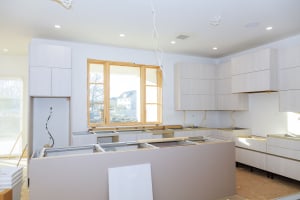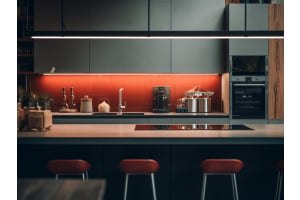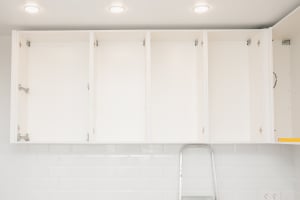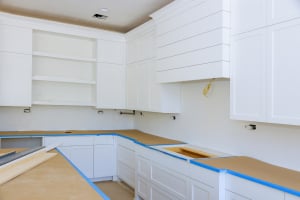Fitting your own cabinets can seem complex, but with some guidance from the cabinetry professionals at 27EStore, you will find that assembling even a tall kitchen cabinet with doors is straightforward.
The key is always to spend time on preparation, such as decorating above kitchen cabinets before you fit your new storage cupboards and having all the tools at hand to avoid delays. Let's work through a step-by-step guide to ensure that your custom-made cabinets and doors are fitted perfectly.
Tools and Equipment for Kitchen Cabinet Installation
The first step is to gather all the supplies necessary to complete your kitchen cabinet installation project. You may not need some tools, such as a saw, if you have ordered pre-sized and custom cabinets–27EStore will deliver your units to your exact measurements and specifications! However, it’s useful to have the following supplies available:
- Drill, screwdriver, and nut driver
- Caulk and a caulking gun
- Tape measure and spirit level
- Hammer and saw
- Protective eyewear
- Screws, brackets, and hardware mounts
Once you have assembled your tools, the next task is to remove any existing units and cabinets from the walls, giving you plenty of space to work. It’s advisable to do this before unpacking your cabinets.
Next, mark where you wish each cabinet to go on the wall, using a tape measure for accuracy and a pencil to add lines to the wall.
Fitting Kitchen Cabinets to Your Wall
All of our premium quality kitchen cabinets are designed for seamless installation, with pre-drilled holes and pre-bored cabinet doors as well as the appropriate hinges. First, use your nut driver and drill to secure the brackets to the wall on each side of the cabinet position, ensuring you check for studs and have verified that the wall is suitably strong to bear the weight of the units.
The next step is to secure the cabinets to the brackets using mounting hardware or screws, checking that the cabinet is firmly fixed to the top and bottom brackets. When the cabinet has been connected to the wall studs or brackets, you should check that the unit is level, using a spirit level to assess whether the height is even across the width of the cabinet. You can use shims to correct any unevenness, placing them between the brackets and behind the edge of the unit until your spirit level shows the cabinet is well-balanced.
Completing Your Kitchen Cabinet Installation
If you're happy that your units are correctly attached and level, you can fit the doors, handles, and other accessories. The hinges supplied are designed for the cabinetry doors you have selected, so they simply need to be fitted to the base unit and the door.
The final step is to fit handles where relevant. Homeowners who have opted for soft-close, handleless drawers or doors can skip this task! Depending on your kitchen layout and design, you may need to complete a few finishing touches, such as:
- Applying caulk around the edges of the unit if the wall behind is uneven, filling tiny gaps, and removing any spaces where dust could accumulate
- Fitting recessed lighting or LEDs under wall-mounted cabinetry
- Adjusting the leg height of floor units if your flooring is not exactly level
- Installing countertops or cornices on wall-mounted kitchen units
- Fitting the optional toe kick underneath floor cabinets
Now, you’re ready to clear away tools, materials, and sawdust if you have needed to drill any holes and should ensure the cabinets are clean before use.
Top Tips on DIY Kitchen Cabinetry Installations
While a methodical approach makes installing kitchen cabinets uncomplicated, it's also worth planning and preparing to prevent any issues from materializing when you are mid-way through your installation. Our kitchen engineers recommend the following:
- Having somebody available to help, or using clamps to hold cabinets and doors in place while you assemble hardware or use a drill
- Wearing protective eyewear to ensure you cannot get dust and other particles in your eyes
- Laying out all the cabinet parts on the floor before you begin and checking you have everything you need, such as screws, hinges, and brackets
- Avoiding over-tightening screws, which can cause wood to crack or split, particularly when using a high-powered drill
It's also wise to use a stepladder for wall-mounted units and to check that each cabinet remains level a week or so after installation. Then, make any necessary adjustments once real-wood veneers have adjusted to the temperature in your kitchen.













